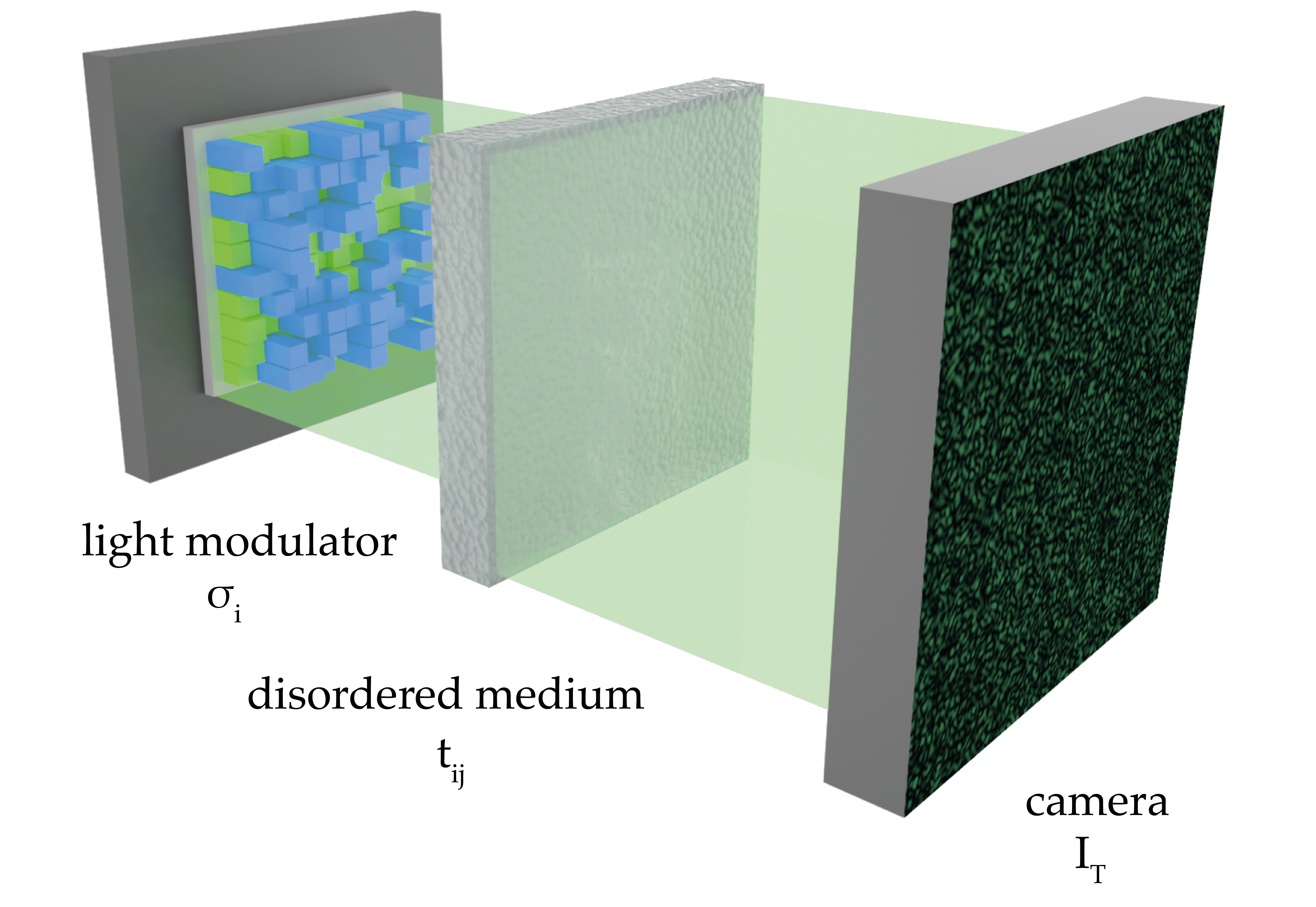Optical computing

Using optics is a promising avenue that proposes to take advantage of the speed of light to process and transmit data much faster than traditional electronic computers. In particular, in the last five years, the combination of wavefront-shaping tools with a scattering medium has been demonstrated as an efficient way to solve complex computational (NP) problems that otherwise would have intractable solve-times with classical computers. NP-problems are important in many fields of study from the physical to social sciences, with an archetypal example in finding the ground-state of an Ising spin system.
In my research, I focus on how to exploit a spatial light modulator and my knowledge on light scattering to simulate Ising hamiltonians with controllable interactions. In particular, it can be shown that light propagation in a disordered medium can be mapped in a system of spins as:
![Rendered by QuickLaTeX.com \[I_T = \sum_{i,j=1}^N J_{ij} \sigma_i \sigma_j = -H\]](https://www.giannijacucci.com/wp-content/ql-cache/quicklatex.com-85abfab2bfa138ecd2ccbd527927d573_l3.png)
where ![]() is the transmitted light intensity through the disordered medium and
is the transmitted light intensity through the disordered medium and ![]() is the hamiltonian.
is the hamiltonian. ![]() represents the coupling between the spins, where the index
represents the coupling between the spins, where the index ![]() runs on the output modes and
runs on the output modes and ![]() and
and ![]() are the elements of the transmission matrix (
are the elements of the transmission matrix (![]() ) of the scattering medium.
) of the scattering medium. ![]() is a matrix that links the input modes on the spatial light modulator (
is a matrix that links the input modes on the spatial light modulator (![]() ) and the output modes on the camera (
) and the output modes on the camera (![]() ) via
) via ![]() .
.
We demonstrated that, by accurately measuring the transmission matrix, it is possible to then use the spatial light modulator not only to tune the coupling distribution of the spins to obtain both ferromagnetic or antiferromagnetic behaviour, but also to generalise the hamiltonian to account for an external magnetic field term.
Moreover, in a project led by a PhD student (Louis Delloye) that I co-supervised, we demonstrated that by changing the properties of the scattering medium it is possible to transition from an all-to-all coupled spin system to an hamiltonian with short-range correlations. In particular, we demonstrated that we can exploit our spin-coupling control to observe the equivalent of replica symmetry breaking usually observed in spin glasses and that we named replica-to-replica fluctuations.
in short: wavefront-shaping techniques, combined with an understanding of the transmission matrix of a disordered medium, can be employed to simulate spin-glass Hamiltonians featuring controlled couplings and an external magnetic field.
main collaborators:
- Claudio Conti (Sapienza, Roma);
- Davide Pierangeli (Sapienza, Roma).